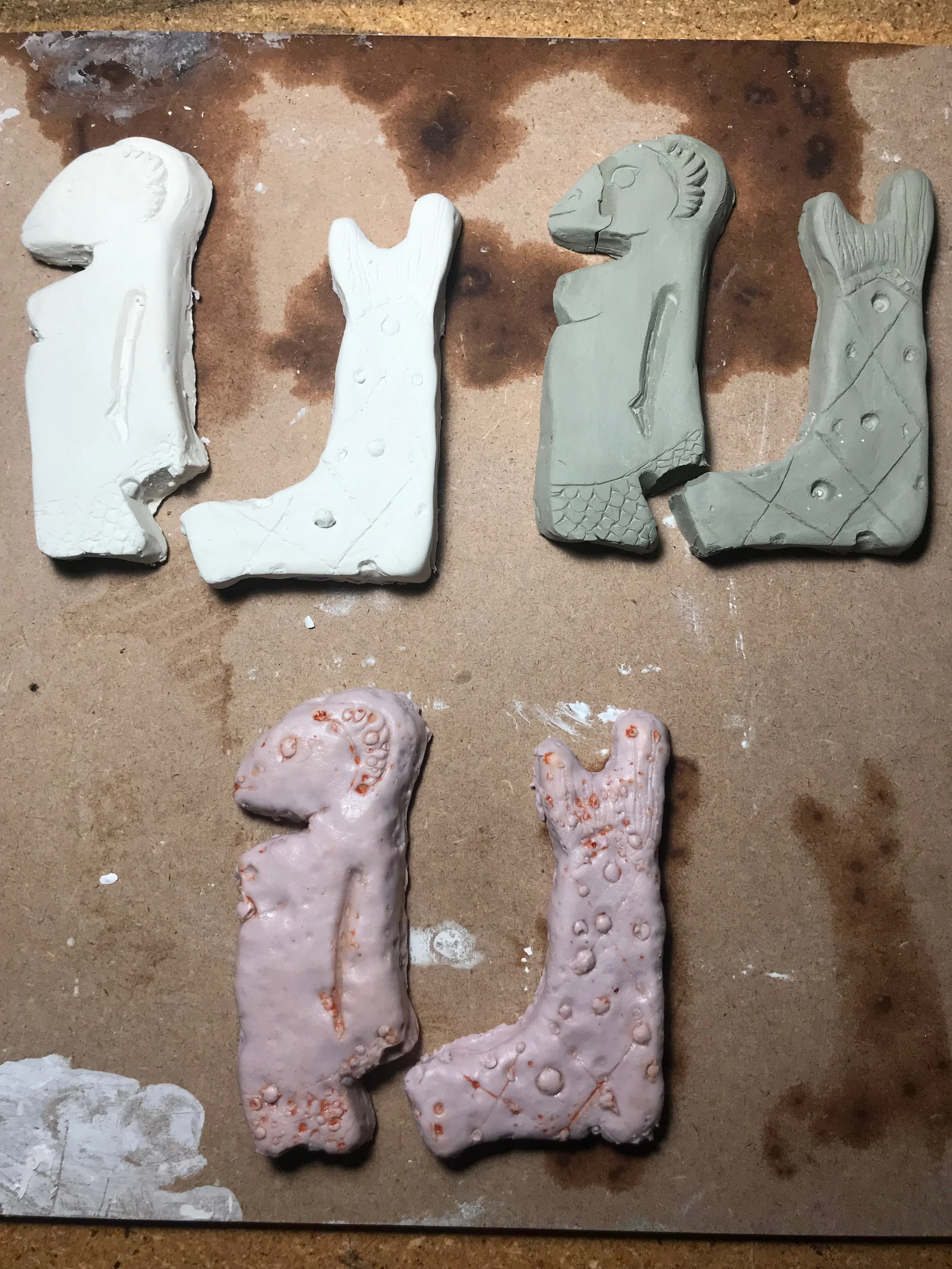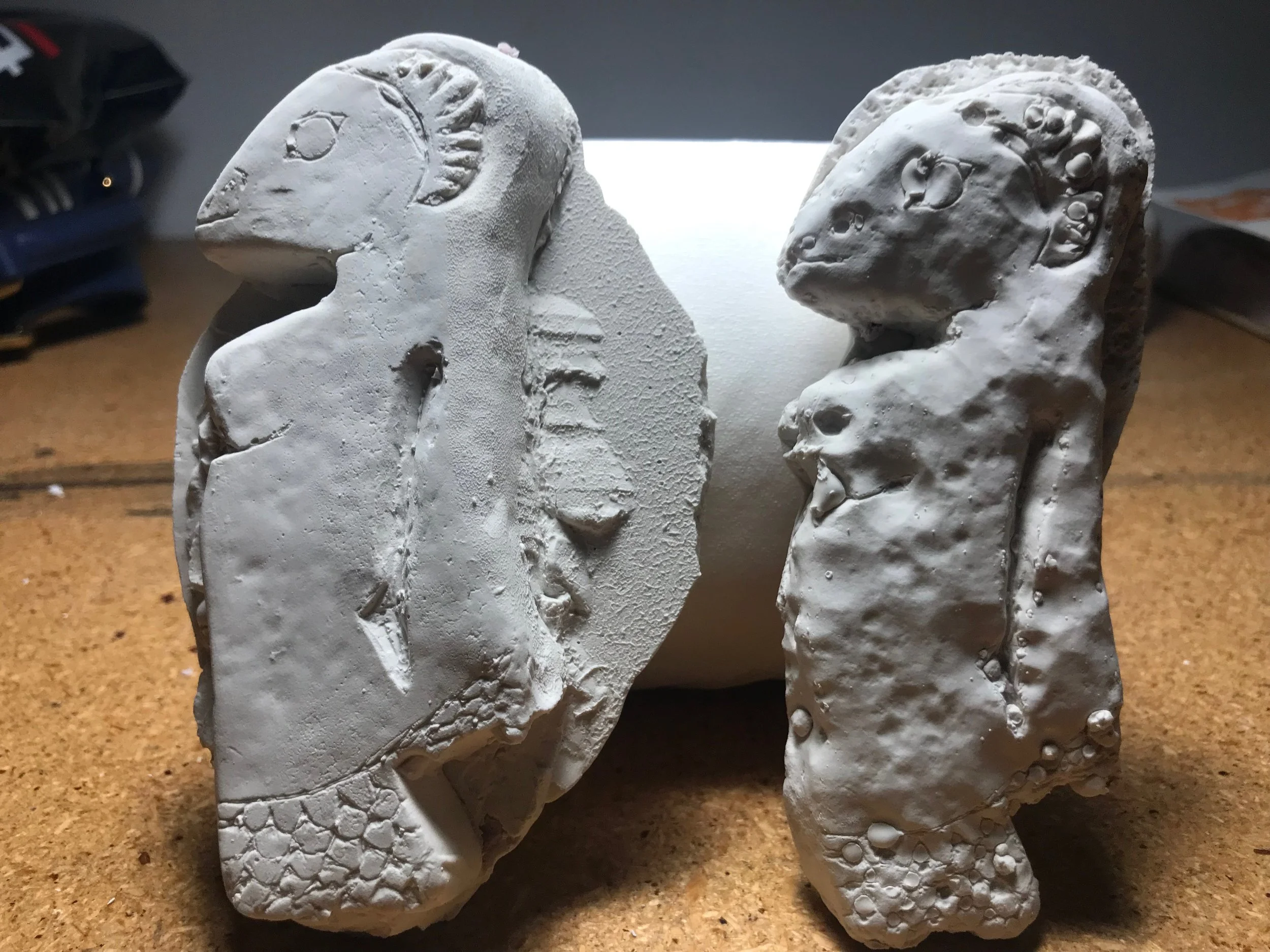She is a Goddess
On Memory, Myth, and the Sacred Feminine in the Gulf
A curator’s reflection by Ahmed Al Enezi
There’s a whisper I’ve followed for years—one that doesn’t arrive through books or archives, but through gesture, silence, and land. It began, unexpectedly, while looking at aerial photographs of Abu Dhabi. The city, from above, appeared not just as infrastructure, but as a body. A woman. A goddess, maybe—long forgotten but not entirely gone.
That moment became a seed for this project. I called it She is a Goddess not to provoke, but to name what so many of us feel yet don’t always have language for: the lingering presence of the sacred feminine in the Gulf. Not as idols or theology, but as cosmological memory—encoded in our rituals, our spatial design, and the women who carry traditions forward in quiet, often invisible ways.
What began as an artistic prompt soon transformed into a curatorial and philosophical inquiry. How does the memory of ancient cosmologies survive in a land where they were formally erased? What remnants remain—in folklore, in textiles, in the way a home is built or a bride’s hand is painted with henna? And most importantly: what is the role of the Khaleeji woman in this spiritual continuum?
What This Work Tries to Remember
She is a Goddess is not about restoring pre-Islamic belief systems, nor is it a nostalgic return to something lost. It is about honoring the traces, the fragments of a cosmology that once placed the feminine at the center of the sacred order.
In the Arabian Peninsula before Islam, goddesses such as Al-Lat, Al-‘Uzzā, and Manāt were worshipped as protectors of fertility, fate, and fortune. Their sanctuaries stood in oases, by springs, in groves of sacred trees. With the rise of Islam, these deities were denounced and erased. Yet their symbolism—lion, moon, star, eye, grove—didn’t vanish. It sank into the fabric of culture, living on in patterns, poems, and practices we often overlook.
Even the structure of Gulf homes, with their private inner courtyards reserved for women, echoes the logic of sacred enclosures. The protective batoola mask, the evil eye amulet, the Sadu weaving patterns—these are not just aesthetic elements. They are, in many ways, echoes of devotional language once spoken fluently.
From Desert Shrines to Domestic Rituals
When I think of the Khaleeji woman today—whether she’s braiding a child’s hair, telling a mythic tale, or preparing a wedding ritual—I see not just cultural continuity, but cosmic agency. She is a vessel of memory. She is the archive. And in many ways, she is the last remaining temple.
In oral histories, old women speak of sea spirits and star maidens. In mountain villages, rain-invoking rituals led by women persisted long after their theological origins faded. These practices aren’t idolatrous. They are ancestral. They are about gratitude, rhythm, and survival.
My interest lies not in literal worship, but in symbolic inheritance. In how Gulf women protect, perform, and transmitwhat was once divine. This includes not only rituals, but architecture, textile language, and even the way cities are imagined. What if our roads unknowingly retrace celestial alignments? What if our place-names—so many beginning with “Umm,” mother—are unconscious offerings to a time when the land was known as maternal?
Why It Matters Now
We are living in a moment of cultural excavation. The Gulf is looking back at its pre-Islamic past—not to revive it, but to understand it more fully, more honestly. Museums, cultural foundations, and artists are beginning to unearth ancient sites, deities, and forgotten cosmologies. But few have asked: where did all the goddesses go?
To me, the answer is: they went into the women. Not literally. But symbolically, poetically, cosmologically.
This project matters because it asks us to consider heritage not just as objects or timelines, but as emotional memory. It invites us to rethink museums as places of listening—not only to the visible and official, but to the quiet, embodied rituals that outlast scripture and structure.
It is also deeply personal. As a curator, artist, and storyteller, I have always been drawn to what lives between myth and fact. She is a Goddess is not a fixed thesis. It is a journey. A listening practice. A return.
The Invitation
This is the beginning of a larger body of work—one that may become an exhibition, a series of essays, a research journal, or a collective memory project with Khaleeji women at its heart. It is an invitation to curators, researchers, artists, and community elders to sit in that silence with me and ask: What have we forgotten? What do we still carry?
If you’re reading this and feel that something stirs, I welcome your stories, your symbols, your questions.
She is a goddess.
She is a memory.
She is a city.
She is your mother.
She is a pattern in the sand.
She is.


